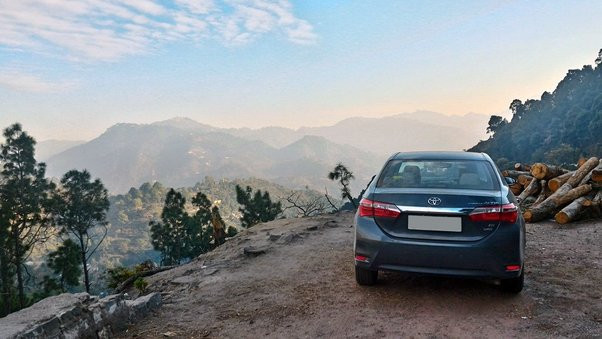Driving in mountainous areas can be a breathtaking experience, offering stunning views and serene landscapes. However, it also comes with unique challenges and risks that require careful attention and preparation. Whether you're a seasoned driver or new to mountain driving, understanding the key aspects of safe mountain driving is crucial. At Get Drivers Ed, we prioritize the safety and education of all drivers, including those navigating mountainous terrain. In this blog, we'll share essential tips for safe mountain driving to ensure you and your passengers stay safe and enjoy the journey.
1. Prepare Your Vehicle
Before heading into the mountains, ensure your vehicle is in top condition. Here are some critical steps to take:
Check Your Brakes: Mountain driving often involves steep descents that can put a lot of strain on your brakes. Ensure they are in good working order and have enough brake fluid.
Inspect Your Tires: Make sure your tires have adequate tread and are properly inflated. Good traction is essential for handling sharp curves and uneven surfaces.
Test Your Lights: Visibility can change quickly in mountainous areas, so ensure all your lights, including headlights, taillights, and brake lights, are functioning correctly.
Pack an Emergency Kit: Include items like a first-aid kit, flashlight, extra batteries, blankets, water, snacks, and basic tools. Being prepared for unexpected situations can make a significant difference.
Get Drivers Ed Tip: Our drivers ed program emphasizes the importance of vehicle maintenance and preparation. Learn more about how to keep your vehicle road-ready with Get Drivers Ed.
2. Understand the Terrain
Mountain roads can be unpredictable, with sharp curves, steep inclines, and sudden changes in weather. Here’s how to navigate these challenges:
Use Lower Gears: When driving uphill, use lower gears to maintain power and control. When descending, lower gears help to control your speed without overusing the brakes.
Watch for Signs: Pay attention to road signs indicating sharp curves, steep grades, and potential hazards like falling rocks or wildlife crossings.
Adjust Your Speed: Drive at a speed that allows you to react to unexpected changes in the road. Slower speeds provide better control and safety on winding mountain roads.
Get Drivers Ed Tip: Our program includes lessons on understanding and navigating different terrains, including mountainous areas. Enhance your driving skills with Get Drivers Ed.
3. Maintain Safe Driving Practices
Safe driving practices are essential in any environment, but they are especially critical in the mountains. Here are some best practices to follow:
Keep a Safe Distance: Maintain a safe following distance from the vehicle in front of you. This gives you more time to react to sudden stops or changes in traffic flow.
Use Turnouts: If you're driving slowly and notice a line of cars behind you, use designated turnouts to let them pass safely. This courtesy helps maintain a steady traffic flow.
Be Mindful of Weather Conditions: Weather in the mountains can change rapidly. Be prepared for fog, rain, snow, or ice, and adjust your driving accordingly. Use chains or snow tires if necessary.
Get Drivers Ed Tip: Our drivers ed courses teach defensive driving techniques and how to adapt to various weather conditions. Stay safe with the knowledge and skills gained from Get Drivers Ed.
4. Handle Emergencies with Confidence
Knowing how to handle emergencies is crucial when driving in remote mountainous areas. Here are some tips:
Brake Failure: If your brakes fail, shift to a lower gear and use the emergency brake to slow down. Look for an uphill road or a soft shoulder to help stop the vehicle.
Engine Overheating: Keep an eye on your temperature gauge. If your engine starts to overheat, pull over safely, turn off the engine, and allow it to cool. Check coolant levels and look for leaks.
Getting Stuck: If you get stuck in snow or mud, try rocking the vehicle gently by shifting between forward and reverse. Use sand, gravel, or mats under the tires to gain traction.
Get Drivers Ed Tip: Our program includes practical tips for handling roadside emergencies, ensuring you are well-prepared for any situation. Learn more with Get Drivers Ed.
5. Stay Focused and Alert
Mountain driving requires your full attention. Here’s how to stay focused and alert:
Minimize Distractions: Keep your focus on the road by minimizing distractions such as mobile phones or loud music. If you need to make a call or send a message, pull over to a safe location.
Take Regular Breaks: Long drives can lead to fatigue. Take regular breaks to rest, stretch, and refresh. This keeps you alert and ready to handle the demands of mountain driving.
Stay Hydrated and Nourished: Drink plenty of water and have healthy snacks to maintain your energy levels. Dehydration and hunger can impair your concentration and reaction times.
Get Drivers Ed Tip: Our drivers ed program covers the importance of staying focused and avoiding distractions. Equip yourself with essential driving skills through Get Drivers Ed.
Conclusion: Drive Safely in the Mountains with Get Drivers Ed
Mountain driving presents unique challenges, but with proper preparation and safe driving practices, you can navigate these roads with confidence. At Get Drivers Ed, we are dedicated to providing comprehensive education that prepares drivers for all types of terrain, including mountainous areas.
Investing in a quality drivers ed program is a smart decision that can save lives and prevent accidents. Enroll in our drivers ed course today and take the first step towards becoming a knowledgeable and responsible driver. Remember, a well-educated driver is a safe driver, and with Get Drivers Ed, you’re in good hands. Drive smart, drive safe, and enjoy the journey with Get Drivers Ed.

